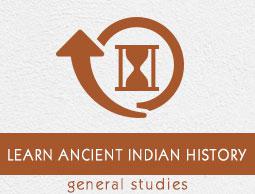The Indian philosophy originated in the speculations of Vedic sages and reached its fruition in the ‘Advaita Vedanta’ of Sankara.
The forces of Nature were personified as gods in the Vedic period and the Gods were considered as living on the earth, in the sky and in the heaven.
Men offered sacrifices to the deities and pray for cattle, crops, wealth, prosperity, health, longevity, progeny, victory, peace, and happiness here, and heaven after death.
It was also believed that there was an Ultimate Being, which manifested itself as the various gods.
The Nasadiya hymn of Rig Veda speculates: "He from whom this creation arose, whether He made it or did not make it, the highest seer in the highest heaven, he forsooth knows, or does even he not know?"
The Upanishads are the Vedic literature comprises the philosophy of Vedic sages about the nature of the Ultimate Reality, the process of Creation, the nature of the Self and its relation with the Ultimate Reality, the highest Value of life, and the Right Way of living.
All these were collected in a large number of books called Upanishads. There are the large numbers of Upanishads, but only 11 are considered as of the great importance, namely −
Isa,
Kathak,
Keno,
Prasna,
Mundaka,
Mandukya,
Taittiriya,
Aitareya,
Chandogya,
Brhadaranyaka, and
Svetasvatara.
It appears to be a general agreement among all these 11 Upanishads on the following point −
Atman i.e. (self) is the Ultimate, Enduring, and Unitary Reality in the individual.
Brahma is the Ultimate Reality in and beyond the objective world. Brahma has created the entire world: it originates from Brahma, it exists in Brahma; and it merges into Brahma. The Brahma is real, infinite, and blissful Consciousness.
The pure Atman and Brahma are one. An individual would be right in saying "I am Brahma."
The one Brahma appears as many because of Maya, the wonderful power of Brahma.
The union of Atman with Brahma is called ‘Moksha.’ It is a state that liberates one from the chain of birth and death and is the highest goal of human life.
All unhappiness and sufferings of man are due to ignorance of the fact that man is the Atman, which is the same as the Brahma.
To realize the Atman, one has to give up all desires for worldly and finite objects, purify one's intellect, and live a righteous life.
The doctrines (discussed above) have been reminded again and again throughout Indian history.
The great thinkers of modern period have discussed the Upanishadic philosophy. Some of them are Ramakrishna Paramahamsa, Swami Vivekananda, Swami Ramatirtha, Aurobindo, and many more.
The Ramayana and the Mahabharata depict ethical and philosophical teachings.
The Ramayana presents Rama as a man of the highest ethical ideals.
The Bhagavad-Gita represents the teachings of Lord Krishna. It is highly valued all over the world, and has been translated into a number of languages.
The principal teachings of Bhagavad-Gita are −
One should remain balanced both in happiness and sorrow; in profit and loss; and in victory and defeat.
Atman is indestructible, neither weapons can pierce it nor can fire burn it.
Death is always that of a body and not of Atman, which takes another body as its abode.
The god incarnates himself with a view to punish the wicked and protect the good people.
One can attain moksha in three ways −
By acquiring Gyan (the highest knowledge);
By devotion to God (bhakti); and
By action, i.e. selfless performance of one's duties (karma) without caring for reward.
The doctrine of karma tells that the present condition of a man is determined by the karma of his previous birth.
The philosophy of karma does not necessarily mean the people are powerless against the fate, which is pre-decided.
Most of the thinkers have explained that though our present condition is due to karma in previous birth. But we can change these conditions by our foresightedness and righteous deeds in the present life.
Important philosophical systems are Charvaka, Jaina, Buddha, Vaisesika, Nyaya, Samkhya, Yoga, Mimamsa, and Vedanta.
The Charvaka, Jaina, Buddha systems are classified as Nastika, as they do not believe in the authority of the Vedas and the God. And, rest others are Astika, i.e. they believe in the Vedas and the God.
The Charvaka system is also called Lokayata. It believes only in materialism. It expounds that
The physical body composed of material elements is the only essence of man;
Death only is the end of man;
Enjoyments of pleasures are the only objects in life; and
There is no life beyond death, no heaven or hell, no Law of karma, and no rebirth.
The Charvaka system does not believe in soul, god, or any other life beyond the present one.
There are some similarities and affinity among the other six systems of philosophy i.e. between Nyaya and Vaisesika, Samkhya, Yoga, Mimamsa, and Vedanta.


